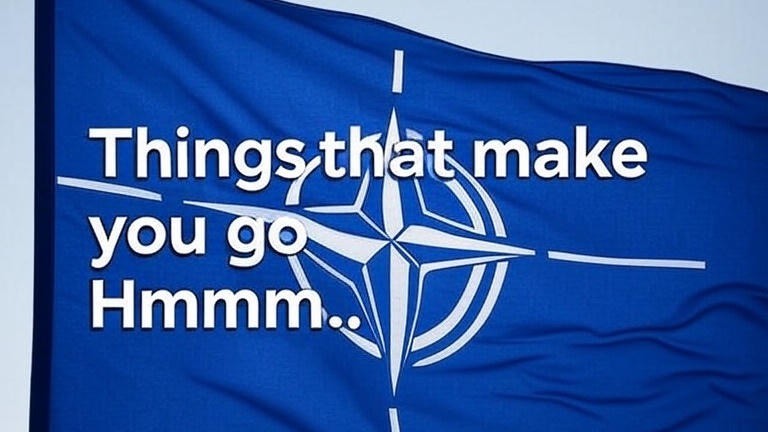The NATO Sixth Generation Fighter Dilemma: Disunity, Delays, and the Reality Check
Imagine asking NATO defense planners to construct a kite; the result might be a delayed innovation requiring triple approval from Paris, Berlin, and Washington—subject to favorable weather. This humor reflects NATO’s genuine struggle to develop a viable sixth-generation fighter jet as competitors accelerate their advancements.
The Promise and Peril: What Is a Sixth-Generation Fighter?
Sixth-generation fighters are poised to surpass current jets like the F-35 with enhanced speed, stealth, sensor integration, and digital warfare capabilities. Key features include:
- Advanced stealth architecture
- AI copilots and collaborative piloting
- High-capacity networking and sensor integration
- Drone swarm control (“loyal wingmen”)
- Piloted or autonomous operation
- Directed-energy weapons, potentially reaching suborbital altitudes
The U.S. NGAD F-47 claims extended range and modular upgrades, utilizing AI for operations. Similarly, China’s J-36, unveiled in 2024, aims to dominate with stealth and range capabilities.
NATO’s Sixth-Generation Challenge: Dysfunction by Design?
A Fading Legacy
As the U.S. and China advance, Europe’s industrial leadership wanes. The once-thriving UK fighter production now stagnates, focusing on American-made F-35s instead. Key players in European defense face a dilemma as the UK, no new orders since 2009, redirects resources away from local manufacturing.
The Great PowerPoint Project: FCAS
The Future Combat Air System (FCAS), a collaborative Franco-German-Spanish initiative, is Europe’s proposed sixth-generation solution. However, progress is slow, with disputes over design and intellectual property hindering development. The expected prototype might not materialize until 2040, embodying “NATO speed.”
Delays result from debates over leadership and funding, alongside concerns over sovereignty and strategic leverage. Such national disputes slow down the production process.
NATO’s Grand Plan: Joint Fighter, Fractured Will
Faced with the challenge from China’s and Russia’s aircraft, NATO suggests a unified sixth-generation program. Yet, competing national interests and a desire for influence create stagnation, leaving only plans without tangible results.
The Real World: U.S. and China Set the Pace
The F-47: America’s Sixth-Gen Flagship
Contrasting Europe’s hesitance, the United States showcases the F-47 under the NGAD umbrella, already clocking extensive flight time with its prototypes. The program promises models with modular architecture and AI copilot systems, aspiring to surpass even the current F-22 capabilities.
China’s Ambitions: The J-36
China’s J-36, launched in late 2024, indicates its intent for air dominance with broadband stealth and long-range capabilities, particularly focused on the Indo-Pacific region.
Europe’s Dilemma
Unlike America or China, European nations face budget constraints and conflicting priorities. Experts argue whether large, crewed stealth aircraft fit Europe’s defense strategy.
Why This Matters: The Strategic Stakes
- **Technology gap**: Delays jeopardize NATO’s future air combat leadership, turning them reliant on US imports or exposed to threats.
- **Industrial stagnation**: With aircraft lines closing, skilled labor and expertise face uncertain futures.
- **Political unity**: Difficulties in collaboration highlight divisions within NATO, impacting its deterrence capabilities.
- **Operational mismatch**: Falling behind in technology could leave European forces vulnerable against advanced adversaries.
Where Next? Possible Futures for NATO
Can Europe independently field a sixth-generation fighter? Scenarios include:
- *Continued drift*: UK and EU projects remain in design stages, with no operational aircraft before 2045.
- *Buy American*: NATO members increase reliance on American technology, reinforcing dependence.
- *“mini-NGADs”*: Smaller alliances develop niche defense technologies rather than a unified fighter.
- *Surprise integration*: A shift in political will and funding sees Europe advancing towards a prototype with possible US or Japanese collaboration.
Industry Voices: Grit, Frustration, and Gallows Humor
NATO fighter projects are often dubbed “PowerPoint purgatory” due to bureaucracy. European contractors mourn waning local projects, while internal critics within NATO countries question compromises. Conversely, U.S. officials proudly present the F-47 as a transformative network capable of advanced missions.
Key Takeaways for the Curious
- Sixth-gen fighters are on the horizon, though progress varies. Europe lags, hindered by politics and bureaucracy.
- NATO’s collaborative attempts falter, with FCAS symbolizing these issues through an absence of results.
- Without European advancements, reliance on US capabilities or facing irrelevance in future conflicts is a risk.
- The future lies in hybrid technology, where unmanned systems and AI lead the way.
Final Thought
Will NATO’s next-gen jets emerge from shared ambition or fall into irrelevance? While the U.S. and China pace themselves toward new capabilities, Europe’s sixth-gen quest remains entangled in bureaucracy.
“At NATO speed, the aircraft will fly just before Elon Musk returns from Mars.”
—sUAS News, July 2025













